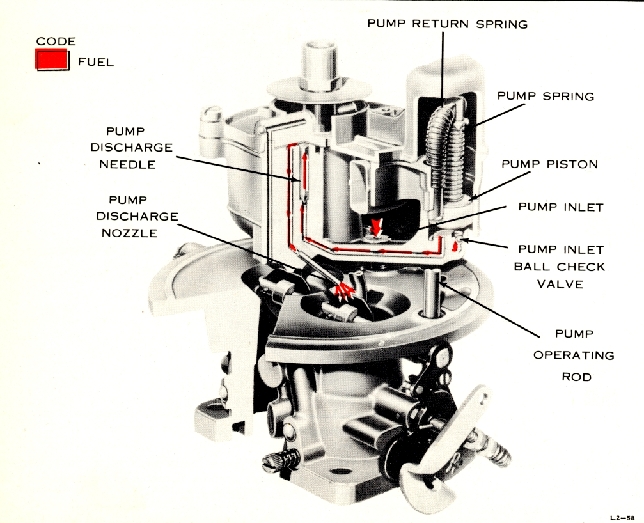
indication of the power demands placed
upon the
engine. Manifold vacuum is
strongest at idle and
decreases as the load on the engine
is increased.
As the load on the engine is increased,
the throttle
plate must be opened wider to maintain
any given
speed. Manifold vacuum is reduced
because the
opened throttle plate offers less
resistance to air
entering the intake manifold.
Manifold vacuum from below the throttle
plate
is transmitted through a vacuum
passage in the
throttle body, main body, and main
body cover to
the top of the economizer diaphragm
in the vacuum
chamber. The manifold vacuum acting
on the econ
omizer diaphragm at idle and normal
load condi
tions is strong enough to hold the
economizer dia
phragm and stem up, compressing
the economizer
spring on the stem. When high power
demands
place a greater load on the engine
and manifold
vacuum drops below a predetermined
point, the
economizer spring overcomes the
reduced vacuum
and expands, forcing the economizer
stem down.
This depresses the pin in the center
of the power
valve, opening the power valve.
Fuel from the
float chamber flows into the power
valve and
through the small holes in the side
of the power
valve into passages leading to both
main wells.
A restriction in the passage leading
to each main
well insures even distribution of
fuel to both main
wells. In each main well, the fuel
joins the fuel
flow in the main metering system,
enriching the
mixture for full power.
As engine power demands are reduced,
mani
fold vacuum increases. The increased
vacuum
overcomes the tension of the economizer
spring
and draws the economizer diaphragm
and stem up.
This releases the power valve pin,
allowing it to
move up and close the power valve
to shut off the
added supply of fuel which is no
longer required.
ACCELERATING PUMP SYSTEM
